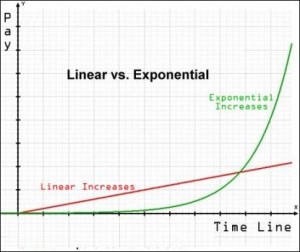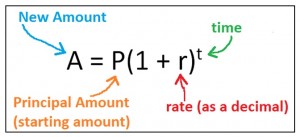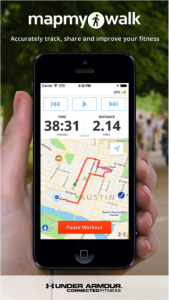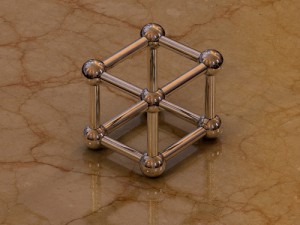Link to Nana’s Lemonade: http://www.101qs.com/3043
This 3-Act Math Task is called “Nana’s Lemonade” by Dan Meyer. In this task there are three acts. Act one is a video that shows a small glass of water with only one lemon wedge, towards the end of the video a second glass comes in which looks like it can be about three to four times the size of the first glass. Along with act one is a questions asking students “How many lemon wedges should we use to make it taste the same?” it asks for the students’ guess as well as a guess that us too high and one that is too low. In act two there a couple questions asking “what information would be useful to know here?” and “guess the volume of the larger cup” in this act there are also two images showing the volume of the cups. With the information given in act two the students are able to get to act three which is a video with the answer.
This task is aligned to the Common Core State Standards:
CCSS.MATH.CONTENT.6.NS.A.1 Interpret and compute quotients of fractions, and solve word problems involving division of fractions by fractions, e.g., by using visual fraction models and equations to represent the problem. For example, create a story context for (2/3) ÷ (3/4) and use a visual fraction model to show the quotient; use the relationship between multiplication and division to explain that (2/3) ÷ (3/4) = 8/9 because 3/4 of 8/9 is 2/3. (In general, (a/b) ÷ (c/d) = ad/bc.) How much chocolate will each person get if 3 people share 1/2 lb of chocolate equally? How many 3/4-cup servings are in 2/3 of a cup of yogurt? How wide is a rectangular strip of land with length 3/4 mi and area 1/2 square mi?.
CCSS.MATH.PRACTICE.MP4 Model with Mathematics.
This activity can be taught in a lesson involving number and operations. This task is asking students to estimate first then use the information given and fractions to solve the answer. The way I would teach this activity is by introducing the standard and then showing the video in act one, I would also ask the students to answer the questions. Showing the students the first video is important so they can understand what the question is asking and the students also get a visual representation of what the problem is like. After the students have watched the video as many times as they desire I would then as them to turn and talk with their peers about what information they might need in order to answer the question. By having the students turn and talk I can ensure that they start to think about what the problem is really asking. Once the students have come up with ideas I can then show them act two which gives them very important information about the size of the cups. After the students have that information they can then set up the fractions to solve for the number of wedges needed. Once the students have solved for the missing term I can then show them act three which is the video with the answer. By going through the three acts I can help the students achieve the common core standard.
Students are also given an opportunity to challenge themselves with the sequel questions which range in difficulty. Since we are in the topic of numbers and operations I would maybe have the students answer “how many ounces of water are in each container?” The students already know how many cups of water each container has but now they will have to convert to ounces.




